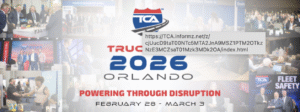DETROIT — Trucking is a sector that is difficult to decarbonize, and 40% of global road transportation emissions comes from trucking.
The average carbon footprint per truck is 50 times higher compared to passenger vehicles, and as C02 taxes rise and bans on diesel trucks in urban areas continue, Berylls Strategy Advisors, a global management consulting firm fully focused on the automobility industry, has investigated the U.S. trucking market and today issued a Berylls Insights Report, “Zero-Emission Trucking in the U.S. – Will Batteries do the Job?”
The paper investigates the U.S. truck market, vehicle deployment, applications and technologies to determine if battery electric trucks are the universal solution for decarbonization of the trucking sector.
While current manufacturers have been sluggish to introduce zero-emission trucks, investors are bullish about electrified commercial vehicles and funding for startups is readily available (the number of zero-emission truck models available in the U.S. jumped from 20 in 2019 to 145 today).
While the number of products available coupled with government incentives impacts adaptation, vehicle range and annual mileage continue to be the main factors that determine the technical and economic feasibility of battery electric trucks compared to other powertrain technology for fleets.
All manufacturers have announced electric truck ranges between 150 and 200 miles, and according to the North American Council on Freight Efficiency (NACFE), 98 percent of Class 3 – 6 trucks do not travel more than 150 miles daily. Consequently, these lighter segments can be electrified more easily and without the need for public fast charging infrastructure. Class 3 promises the highest overall market volumes – between 300,000-350,000 annually.
Comparatively, the heavy-duty truck market is more volatile with a volume of 200,000-300,000 units annually.
These vehicles require high payloads and range requirements, meaning heavier and more expensive batteries. One-hundred miles of extra vehicle range cost 2,500 pounds of payload and an additional $20,000 for the battery, making the investment cost and payload penalty of a larger battery simply too high to justify the total cost of ownership.
“Our insight shows that battery electric trucks can be competitive, but not for all use cases,” said Martin French, Berylls U.S. managing director. “There will be a pluralism of powertrain solutions and any truck purchase will be preceded by carefully weighing the importance of technical fit as well as capital and operational expenditures.”
The Trucker News Staff produces engaging content for not only TheTrucker.com, but also The Trucker Newspaper, which has been serving the trucking industry for more than 30 years. With a focus on drivers, the Trucker News Staff aims to provide relevant, objective content pertaining to the trucking segment of the transportation industry. The Trucker News Staff is based in Little Rock, Arkansas.














